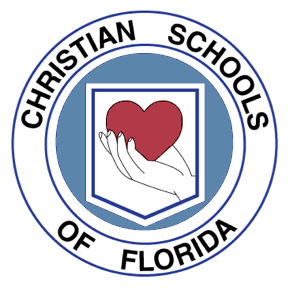The CSF Accreditation Process
CSF accreditation is an ongoing five-year process for school effectiveness and improvement.

For a school seeking initial or continued accreditation, the ongoing School Effectiveness and School Improvement Process (SESIP) measures and furthers the school’s effectiveness and improvement.
Over a five-year period each CSF member school is required to both comply with determined standards of excellent practice (Standards Compliance) and to develop and report on its School Improvement Plan (SIP). In the SIP, the school will annually respond to the current Peer Review’s General Recommendations until completed and report on the progress of its selected Focus Areas with bench-marked Action Steps.
A typical five-year cycle is as follows:
Year 1
- School leadership surveys groups of school stakeholders regarding their evaluation of the school, its environment and processes.
- School leadership reviews recommendations from the previous peer review team visit in order to determine which will be addressed annually in narrative form until completed, or which will become part of the school’s Focus Areas.
- Using surveys and recommendations, school leadership deliberates to formulate three to five Focus Areas for school improvement over the next five years. School Head publishes Focus Areas (SESIP-3).
- School Head or designated teams report Action Steps (SESIP-4) for the first year of each Focus Area.
- School leadership promotes school community awareness of Standards Compliance.
- Designated staff begins to collect student data for analysis, addressing standards 5.2–8.
Year 2 – Year 5
- School Head or designated staff addresses the progress of General Recommendations.
- School Head or designated staff amends each Focus Area by adding new Action Steps for the current year or editing previous ones.
- School Head or Accreditation Co-ordinator reviews levels for Standards Compliance.
- Designated staff begins to collect student data.
- Designated staff continues to collect student data for analysis, addressing standards 5.2–8.
Year 4 – Additional Actions
- School Head can now publish Standards Compliance report (SESIP-2) and assign strand teams to begin to evaluate levels of implementation.
- School Head can now assign focus area teams to evaluate progress of bench-marked action steps.
- Designated staff continues to collect and analyze student data, addressing standards 5.2–8.
Year 5 – Final Actions
- School completes all SESIP forms for Strand Compliances, the School Improvement Plan (General Recommendations and Focus Areas with bench-marked Action Steps) and the Student Achievement online.
- School collects and reviews documentation of Standards Compliance.
- School hosts visit by Peer Review Team.
- Peer Review Team evaluates the school’s processes and publishes PRT-2.
- Peer Review Team submits PRT-2 and recommends accreditation status to CSF Executive Committee.
- CSF Executive Committee acts on PRT recommendation.
- CSF General Membership confirms action of CSF Executive Committee.
- For schools seeking collaborative accreditation, all SESIP forms and the PRT-2 are submitted to collaborative accrediting agency by CSF in PDF format.
